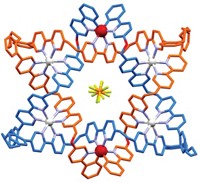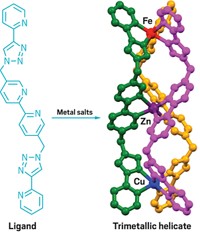Advertisement
Grab your lab coat. Let's get started
Welcome!
Welcome!
Create an account below to get 6 C&EN articles per month, receive newsletters and more - all free.
It seems this is your first time logging in online. Please enter the following information to continue.
As an ACS member you automatically get access to this site. All we need is few more details to create your reading experience.
Not you? Sign in with a different account.
Not you? Sign in with a different account.
ERROR 1
ERROR 1
ERROR 2
ERROR 2
ERROR 2
ERROR 2
ERROR 2
Password and Confirm password must match.
If you have an ACS member number, please enter it here so we can link this account to your membership. (optional)
ERROR 2
ACS values your privacy. By submitting your information, you are gaining access to C&EN and subscribing to our weekly newsletter. We use the information you provide to make your reading experience better, and we will never sell your data to third party members.
Materials
Nickel Complex’s Magnetic Switch
Light-driven isomerization changes molecule’s coordination and thus its magnetic properties
by Carmen Drahl
January 31, 2011
| A version of this story appeared in
Volume 89, Issue 5

With a turntable-like design, chemists have developed the first single molecule that can stably switch magnetic properties at room temperature in a homogeneous solution (Science, DOI: 10.1126/ science.1201180). This kind of spin-switching behavior had previously been limited to bulk materials or to very low temperatures, which limits potential applications in areas such as single-molecule magnetic storage. The switchable molecule, designed by Rainer Herges and coworkers at the University of Kiel, in Germany, is a nickel(II) porphyrin complex with a dangling phenylazopyridine group attached to its side. When exposed to green light, the nitrogen-nitrogen double bond in the phenylazopyridine isomerizes from trans to cis, which leaves the pyridine nitrogen hanging above the nickel like a record player needle. As the nitrogen coordinates to nickel, the complex’s geometry transitions from square planar to square pyramidal and its magnetic properties switch from diamagnetic to paramagnetic. The shift can be reversed by blue light. The team notes that the complex may be useful as a contrast agent that can be turned on and off at will for dynamic magnetic resonance imaging.





Join the conversation
Contact the reporter
Submit a Letter to the Editor for publication
Engage with us on Twitter